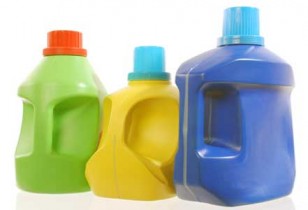5 Tips for Storing Summer Clothes
The first day of fall is nearly here, and soon we’ll be trading our shorts and sundresses for warm coats and cozy sweaters. Here in the midwest, we often store our summer clothes for 6 months (or more!). Having to pack away our summer wear can involve more than just tossing them into storage bins and shoving them under the bed.
Tip #1 Proper Care
Take the time to properly care for your clothes before storing them and they’ll last you for years to come…plus you’ll also be less likely to have to deal with nasty pests like moths, which can eat holes through sweaters and other fabrics – which you won’t see until after they’re cleaned next year!
Tip #2 Sort
Sort through your clothes first to decide what stays or goes. This is a great time to create your “donate” pile and dispose of or recycle any clothes that are ripped or torn that you don’t plan to mend. Other items to consider removing from your wardrobe would be anything that doesn’t fit properly, clothes you’ve fallen out of love with, unworn items, and clothes that don’t make you feel amazing.
Tip #3 Clean Everything
Before you pack those summer clothes away, it’s important to clean everything. Not only does this keep your smelling and looking fresh (dirt left on clothes can leave permanent stains over time). Cleaning everything prevents unseen moths and other pests from taking up residence.
As you sort through the clothes you’re keeping, separate out the hand-wash and dry clean only items and your regular laundry items in another. Be sure to clean and care for the remaining clothes according to the care label instructions.
Tip # 4 Fold
After you’ve cleaned the garments you want to keep and store, fold and stack your items from heaviest (on the bottom) to lightest (on the top). This will help keep your fabrics from developing too many creases. If you want to help keep fabrics from creasing, you can put a layer of acid free tissue paper between the folds of each garment.
Tip #5 Protect & Store
There are a number of options when it comes to storing clothes. For short term (6 months or less) storage – plastic storage bins work well, cedar chests or an old suit case. The one material to avoid would be cardboard. It’s a natural attractant for pests.
It’s also important that you protect your clothes during storage. Be sure the storage container you’re using is clean and dry and free of any dirt or bugs. Place your folded clothes in the container. Be careful not to stack in there too tightly. You want air to be able to circulate around the garments. Place a layer (or two) of acid free tissue paper over the top of the clothes in each storage bin. You can also toss in a cedar block or sachet on top of the acid free tissue – just be certain the cedar doesn’t come in direct contact with your clothes
If you have a garment you wish to hange for storage. Use a thicker, padded hanger to avoid indenting or creasing the shoulders. Cover the garment with a clean cotton or linen sheet to help protect it during storage.
Be sure to keep your stored clothes in a dry, cool location away from direct light and heat. Closets or under your bed are good options.
Happy packing!










